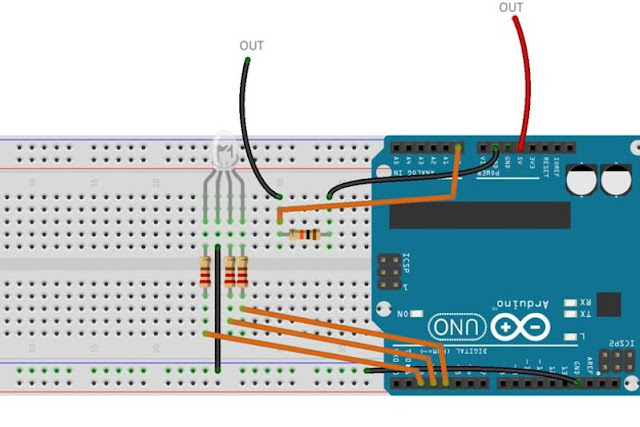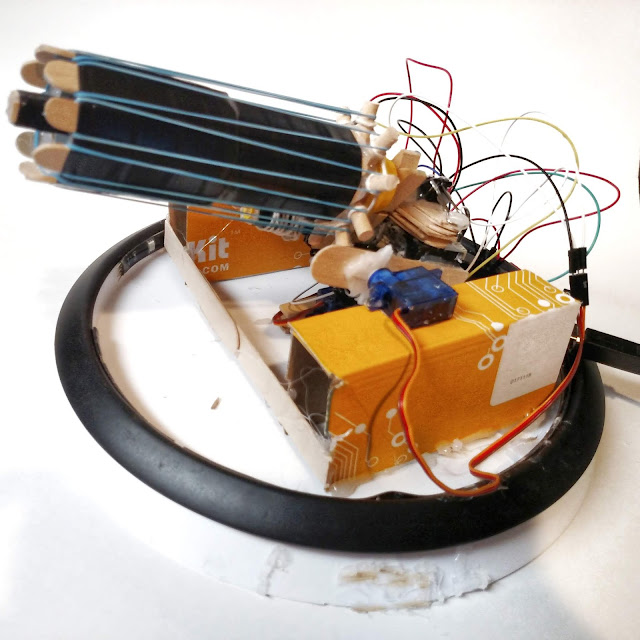DIY Plant Moisture Sensor
Step 1: Materials
You will need to gather these things in order to build this project:
- Arduino UNO or equivalent (x1): https://amzn.to/2DLjxR2
- 220Ω* resistors (for LED) (x3): https://amzn.to/2S2sV5R
- 10kΩ resistor (x1) - brown black orange: https://amzn.to/2S2sV5R
- RGB LED (x1) or 3 different colored LEDs: https://amzn.to/2Fzbusx
- Long Jumper Cables (x2): https://amzn.to/2Q7kiKc
- Jumper Cables (x6): https://amzn.to/2Q7kiKc
- Breadboard (x1): https://amzn.to/2RYqiSK
- Bolts of any size (x2): https://amzn.to/2qWLYTF
- Nuts same diameter as bolts above (x2): https://amzn.to/2qWLYTF
*red-red-brown
- Arduino UNO or equivalent (x1): https://amzn.to/2DLjxR2
- 220Ω* resistors (for LED) (x3): https://amzn.to/2S2sV5R
- 10kΩ resistor (x1) - brown black orange: https://amzn.to/2S2sV5R
- RGB LED (x1) or 3 different colored LEDs: https://amzn.to/2Fzbusx
- Long Jumper Cables (x2): https://amzn.to/2Q7kiKc
- Jumper Cables (x6): https://amzn.to/2Q7kiKc
- Breadboard (x1): https://amzn.to/2RYqiSK
- Bolts of any size (x2): https://amzn.to/2qWLYTF
- Nuts same diameter as bolts above (x2): https://amzn.to/2qWLYTF
*red-red-brown
Step 2: Create Sensor Prongs
You will need to repeat this step twice (once for each prong):
- Begin to tighten the nut around the bolt
- Slide the end of the long jumper cable between the nut and the head of the bolt.
- Finish tightening the nut until you are unable to pull out the jumper cable
Step 3: Create the Circuit
Follow the schematic or the breadboard image - whichever one works better for you. The wires labeled "out" are the two prongs you just created.
Step 4: Upload Code
Copy and paste this code into the Arduino IDE:
int moistPin = 0;
int moistVal = 0;
int tooDry = 150; //set low parameter for plant
int tooWet = 400; //set high parameter for plant
void setup()
{
Serial.begin(9600);
}
void loop()
{
moistVal = analogRead(moistPin);
Serial.println(moistVal);
int percent = 2.718282 * 2.718282 * (.008985 * moistVal + 0.207762); //calculate percent for probes about 1 - 1.5 inches apart
Serial.print(percent);
Serial.println("% Moisture ");
if (moistVal <= tooDry) {
digitalWrite(4, HIGH); //Red LED
digitalWrite(3, LOW);
digitalWrite(2, LOW);
}
else if (moistVal >= tooWet) {
digitalWrite(4, LOW);
digitalWrite(3, HIGH); //Blue LED
digitalWrite(2, LOW);
}
else {
digitalWrite(4, LOW);
digitalWrite(3, LOW);
digitalWrite(2, HIGH); //Green LED
}
delay(250);
}
Step 5: Place Sensor Prongs
- Insert the prongs you made about 1" to 1.5" apart in soil close to the plant you want to monitor.
- Give the plant a healthy amount of water and open the serial monitor
- It should give you readings around 25 - 30% if you gave it the right amount of water
- If not, try moving the prongs around to get it right (or you just added too much water)
Further Notes:
If this is going outside you will want to put your circuit inside of a Tupperware or other waterproof container to protect it from the elements. Then drill some holes for the sensor wires to come through and add a battery box to power it. Mine is not going outside though, and will be fine without a container.









